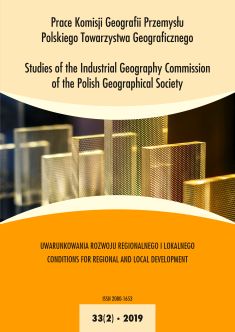Employment Structures of the European Union Countries in 2008–2017 – New Approach to Dynamic Assessment
Employment Structures of the European Union Countries in 2008–2017 – New Approach to Dynamic Assessment
Author(s): Małgorzata Markowska, Andrzej SokołowskiSubject(s): Human Resources in Economy, Socio-Economic Research
Published by: Wydawnictwo Uniwersytetu Komisji Edukacji Narodowej w Krakowie
Keywords: country; employment; European Union; structural changes
Summary/Abstract: The aim of the paper is to present a new idea in analysing changes in structures, assuming that structures change gradually through rather slow evolution. Employment structures of European Union countries, analysed in terms of 10 economic sections are definitely these types of structures. Single structure is a result of individual decisions undertakes by thousands of citizens. Cluster analysis is a method used in the paper, and what is new is a non-standard list of diagnostic variables. It consist of 10 coefficients of structure from the initial year of analysis (2008), 8 measures of structure changes from year to year and 9 measures of structure dissimilarity between each year and the initial one. Such a set of features describes structures at a starting point of analysis together with chain and fixed base dynamics. 28 EU countries are analysed, which creates a taxonomic problem [Y, TZ]. Using furthest neighbour agglomerative method we found 7 group of countries, and two of them are single-country groups. Differences between groups have been described by within-group averages.
Journal: Prace Komisji Geografii Przemysłu Polskiego Towarzystwa Geograficznego
- Issue Year: 33/2019
- Issue No: 2
- Page Range: 7-17
- Page Count: 11
- Language: English

